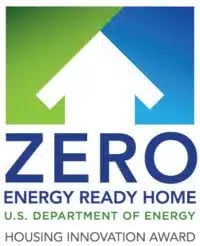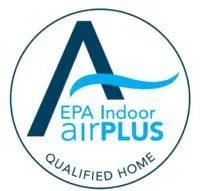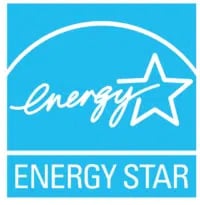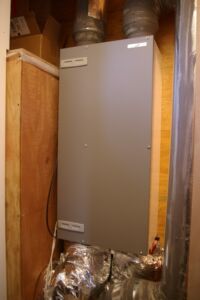
Because my heating requirements are so small, my house does not need a central heating system. Instead, we heat only the Great Room using an inexpensive wall-hung heat pump (see the previous blog post), and then use a small ducted fan system to move conditioned air from the Great Room to other rooms. Heating only a single room in a 1,650sf house only works in a house like mine with a highly efficient thermal envelope. A conventionally built American home – even a new one built to meet code – loses so much heat through the exterior walls and ceiling or roof that it can only be kept comfortable by distributing heated air to every room.
Last winter, I used a heat gun to measure surface temperatures all over my house. What I found was that the interior surface temperature of my exterior walls was exactly the same as the air temperature, throughout the house, on both floors. This is possible because of the super-insulation and the air-tight envelope. My European windows get slightly colder than the air but still stay within 7 degrees of the air temperature on a 14 degree winter day. This means that winter-time window condensation is a thing of the past because the glass never gets cold enough to reach the dew point temperature.
Air-tight homes need mechanical ventilation to achieve high indoor air quality. By choosing to ventilate mechanically, we are able to bring exactly the right amount of fresh, filtered air into the house, allowing occupants with allergies or asthma to live symptom-free at home. We built a similar home in Ridgefield for a couple with allergies who described how wonderful it was to come home, shed their allergen-contaminated clothing, take a nice shower, and then enjoy life, symptom-free. There is no secret to doing this. In fact, the first home I built fifteen years ago was an American Lung Association-certified Health House, which pioneered the same strategies.
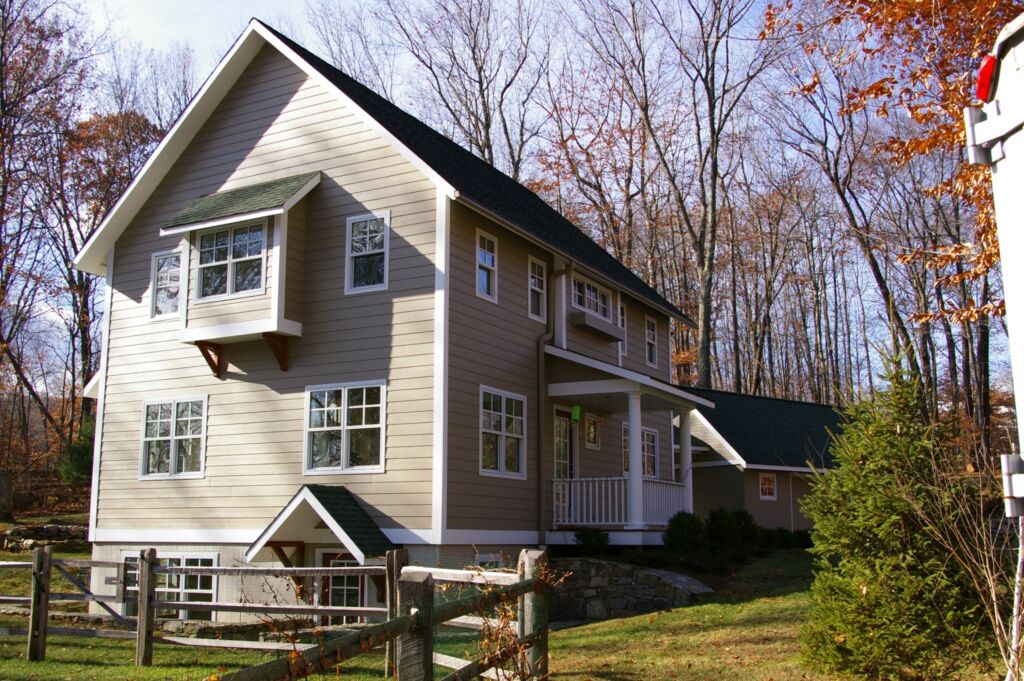
My Passive House, like all of our homes, uses an energy-recovery ventilator (ERV) to bring in fresh air and exhaust stale air. An ERV brings in exactly the same amount of fresh air as it exhausts stale air, which is called balanced ventilation. This helps to keep the air pressure in the house the same as the outside air pressure, which means that there is no pressure difference to induce unwanted air flows in and out of the house. This means that when doors are opened in the winter, there is no rush of cold air into the house, which is a nice comfort feature.
My European ERV transfers about 90% of the energy in the air, in the form of both heat and moisture, from the exhaust air to the fresh air during the winter months, essentially pre-heating my fresh air almost for free. In normal operation, my ERV uses between 15-30 watts of electricity, about the same as a CFL light bulb. During the summer months, when the house is closed up and I have the AC running, the ERV transfers the heat and moisture from the incoming fresh air to the outgoing stale air, essentially pre-cooling my fresh air, again almost for free.


